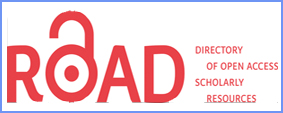ISLAM IN GANTARANGKEKE: The Encounter of Cultural Identities
Abstract
This article is a study of Islamic relations and local traditions in this case is the Islamic tradition of the Gantarangkeke indigenous people, Bantaeng Regency as a locus. The research problem is how is the history of the Islamic encounter with Gantarangkeke locality and its influence on the beliefs and traditions of the Gantarangkeke people ?. This study belongs to the category of qualitative-descriptive field research, using a historical, philosophical, social, cultural, and descriptive-critical analytical approach. The local tradition of the Gantarangkeke community has grown long before Islam entered their territory. The tradition is rooted in the belief of the Patuntung religion which is the ancient belief of the pre-Islamic Gantarangkeke community. The local tradition is institutionalized at the Pajukukang traditional ceremony which is held every year and has several series of events, namely assulukang pangngajai, akkawaru, if ri pajukukang, and angnganre toballa'na. The encounter of Islam and local traditions gave birth to a model of cultural struggle in which Islam as a teaching that came from the outside and of a global nature was brought into the realm of the locality of the Gantarangkeke tradition. This then gave birth to the concept of Sallang religion as a meeting point between patuntung and Islamic beliefs. The concept of Sallang religion later became the basis for the locus and forms of the struggle of the culture. Cultural struggles enter the locus of the belief system, the socio-cultural system, and the rite system and the symbolic meaning of tradition. The cultural struggle gave birth to four forms of cultural and religious relations, namely negotiation, compromise, syncretism, and cultural acculturation. From this cultural struggle, the local culture model of Gantarangkeke was unique and unique.References
Abdullah, Taufik dan M. Rusli Karim (ed), Metodologi Penelitian Agama: Sebuah Pengantar. Yogyakarta: Tiara Wacana. 1989.
Ahmad, Abdul Kadir dkk. Jarak Sosial Sebuah Identitas. Makassar: Idelenggara. 2009.
Akhmar, Andi M (ed). Bantaeng Masa Prasejarah ke Masa Islam. Makassar: Masagena Press. 2007.
Alifuddin, M. Islam Buton: Interaksi Islam dan Budaya Lokal. Jakarta: Badan Litbang dan Diklat Departemen Agama RI. 2007.
Arikunto, Suharsini Manajemen Penelitian. Jakarta: Rineka Cipta. 2007.
Baso, Ahmad. Plesetan Lokalitas:Politik Pribumisasi Islam. Yogyakarta: Desantara. 2002.
Castells. Manuel. The Power of Identity. Chisester: West Susex:Blackwell Publishing Ltd, 2010.
Gibson, Thomas. The Sun Pursued the Moon:Symbolic Knowledge and Traditional Auhority among the Makassar. Diterjemahkan oleh Nurhady Sirimorok dengan Judul Kekuasaan, Raja, Syeikh, dan Ambtenaar. Pengetahuan Simbolik dan Kekuasaan Tradisional Makassar 1300-2000. Makassar: Ininnawa, 2009.
Gunawan, Imam. Metode Penelitian Kualitatif Teori dan Praktek. Jakarta: Bumi Aksara, 2014.
Koentowijoyo. Metodologi Sejarah Sejarah. Yogyakarta: Tiara Wacana. 2008.
Maunati, Yekti. Identitas Dayak: Komodifikasi dan Politik Kebudayaan. Yogyakarta: LkiS. 2004.
Miles dan Huberman, Qualitatif Data Analisis Beverly Hill: SAGE Publication itd. 1984.
Moleong, Lexy J. Metodologi Penelitian Kualitatif. Bandung: PT Remaja Rosdakarya. 2001.
Said, Muhazzab. “Kajian Akulturasi islam dan Budaya Lokal Bungamale sebagai Budaya Lokal Sulawesi Selatan”, dalam Jurnal al-Fikr Volume 16 Nomor 3 tahun 2012.
Sakka, La. Sejarah islam di Bantaeng. Laporan Penelitian Balai Litbang Agama Makassar. 2013.
Surjo, Djoko dkk. Agama dan Perubahan Sosial: Studi Hubungan Antara Islam, Masyarakat, dan Struktur Sosial Politik di Indonesia. Yogyakarta: LKPSM. 2001.
Thohir, Ajid. Studi Kawasan Dunia Islam. Jakarta: Rajawali Press. 2009.




.png)









